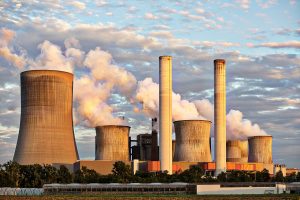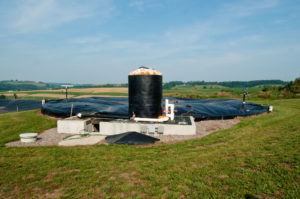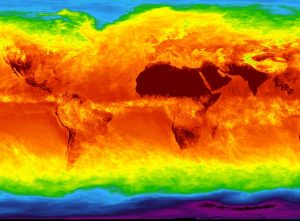587 item(s) were returned.
Founder & CEO
The Idea Logical Company, Inc.
Although there is a broad consensus that we need to “price carbon” to enable markets to account for the external costs of burning fossil fuels, no proposed national carbon tax legislation has received significant traction since the failure of the Waxman-Markey cap-and-trade bill in 2010. One formula, long advocated by the non-partisan Citizens’ Climate Lobby but never proposed as legislation, is to simply refund the tax revenue in equal shares to individuals. CCL proposed starting at $15 per ton (which equates to 15 cents per gallon of gas) with an annual increase of $10 a ton forever. CCL has been… [more]
View InsightPresident & CEO
The Electricity Consumers Resource Council
On June 1st President Trump directed Energy Secretary Rick Perry to halt the closure of competitive coal and nuclear power plants, which are being pushed offline by less expensive energy sources. A leaked memo outlined a plan to subsidize these facilities using Energy Department emergency authorities under the Federal Power Act and a Cold War-era defense law enabling the Department to nationalize parts of the power sector. The memo claimed that saving these “fuel-secure” plants is a matter of national security. The North American Electric Reliability Corporation and regional grid operators have not found evidence that a grid emergency exists… [more]
View InsightMPP Candidate
George Washington University
In January, the Bureau of Ocean Energy Management (BOEM) released its “America-First Offshore Energy Strategy,” as part of the 2019-2024 National OCS Oil and Gas Leasing Draft Proposal Program (DPP). While the Obama Administration’s 2017-2022 program opened up only 6% of total outer continental shelf (OCS) acreage to resource exploration and development, the 2019-2024 Program proposes to open up approximately 90%. The BOEM estimates the U.S. OCS has about 90 billion barrels of undiscovered oil and 327 trillion cubic feet of undiscovered, natural gas. If implemented, the 2019-2024 DPP would dramatically expand America’s capacity for offshore oil and gas drilling,… [more]
View InsightDistinguished Associate
Energy Futures Initiative
On May 16th, The Energy Futures Initiative (EFI) and the National Association of State Energy Officials (NASEO) released the 2018 U.S. Energy and Employment Report (USEER). The USEER offers data on employment trends in four key energy sectors – Electric Power Generation and Fuels; Transmission, Distribution and Storage; Energy Efficiency and; Motor Vehicles. This is the third installment of the energy jobs survey established by the U.S. Department of Energy in 2016. Overall, firms covered by the survey anticipate roughly 6.2 percent employment growth for 2018. Energy Efficiency employers project the highest growth rate over 2018 (9 percent), followed by… [more]
View InsightUniversity Distinguished Professor
Michigan State University, Dept. of Chemical Engineering
Electricity generated from renewables has grown rapidly in the past few decades. However, the continued growth of solar and wind is imperiled by the high costs of grid integration. While solar and wind energy enjoy low operating costs, they are intermittent and variable on multiple time scales. Thus they may not be available when needed. Storing electrical energy is costly and so is providing backup power. Thus grid integration costs rise with the growth of solar and wind generation. There is a strong positive correlation between installed wind and solar capacity versus the residential energy price in 21 member countries… [more]
View InsightAssistant Professor, EECS
Washington State University
Cybersecurity threats to the electric grid are no longer hypothetical. While attacks impacting grid operations have only been reported in Ukraine, DHS recently identified intrusions into the U.S. grid. Fortunately, substantial progress has been made in recent years to protect the grid. While the North American Energy Reliability Corporation (NERC) has implemented bulk grid cybersecurity requirements for the past decade, state utility commissions are increasingly defining requirements for low-voltage distribution grids. Furthermore, NERC-led initiatives, such as national response exercises (GridEX) and information sharing programs (E-ISAC) help ensure utilities are prepared to respond to similar events. At the federal level, the… [more]
View InsightLast Monday, Scott Pruitt announced that the Environmental Protection Agency will now consider the burning of biomass for energy to be carbon neutral. The agency memo points out that the use of biomass for energy can bolster domestic energy production, reduce wildfire risk, and help ensure that forests continue to remove carbon from the atmosphere. The memo further states that “Managed forests improve air and water quality while creating valuable jobs and thousands of products that improve our daily lives.” Despite the ruling, the debate continues over the carbon neutrality of biomass. Scientists and various non-governmental organizations have raised concerns… [more]
View InsightU.S. House of Representatives
Member, Energy & Commerce Committee
It is critical that we ensure our nation enjoys a reliable and resilient grid, and that consumers continue to have access to affordable and reliable electricity. But today, coal-fired power generating plants are being closed at an alarming rate. Since 2010, plants representing almost 108,000 megawatts of coal-fired generating capacity have shut down or announced plans to close. Indiana alone ranks second among all states with 39 coal-fired electric generating plants having already retired. As a supporter of an all-the-above energy strategy, I believe that power generators should rely on a diverse mix of fuel sources. Coal-fired generation is one… [more]
View InsightSenior Fellow in Energy and Environmental Policy
Competitive Enterprise Institute
On Monday, Environmental Protection Agency (EPA) administrator Scott Pruitt announced that the Obama EPA’s greenhouse gas emission (GHG) standards for model year 2022-2025 cars and light trucks will be reconsidered by the agency. Critics have pointed out that the stringent Obama era CAFE standards, peaking at 54.5 MPG in 2025, are too strict and potentially price millions of Americans out of the market for new cars while also failing to have a meaningful impact on GHG levels. Unlike other emissions from motor vehicles, CO2 is not an air contaminant. Yes, it is a greenhouse gas, but so is water… [more]
View InsightPresident
Micro-Utilities, Inc.
The UN has stated that the World must urgently act to cut a further 25% from predicted 2030 greenhouse gas (GHG) emissions. In the US, GHG emissions today are 4% above 1990 levels and are projected to increase. Based on UN goals, it appears that neither sufficient reductions in the release of GHG nor sufficient mitigations of the effects of climate change are taking place. To achieve those goals an 80% GHG reduction by 2100 would require an average reduction of 64 million metric tonnes each year for the next 82 years, or 165 million metric tonnes each year if… [more]
View Insight








